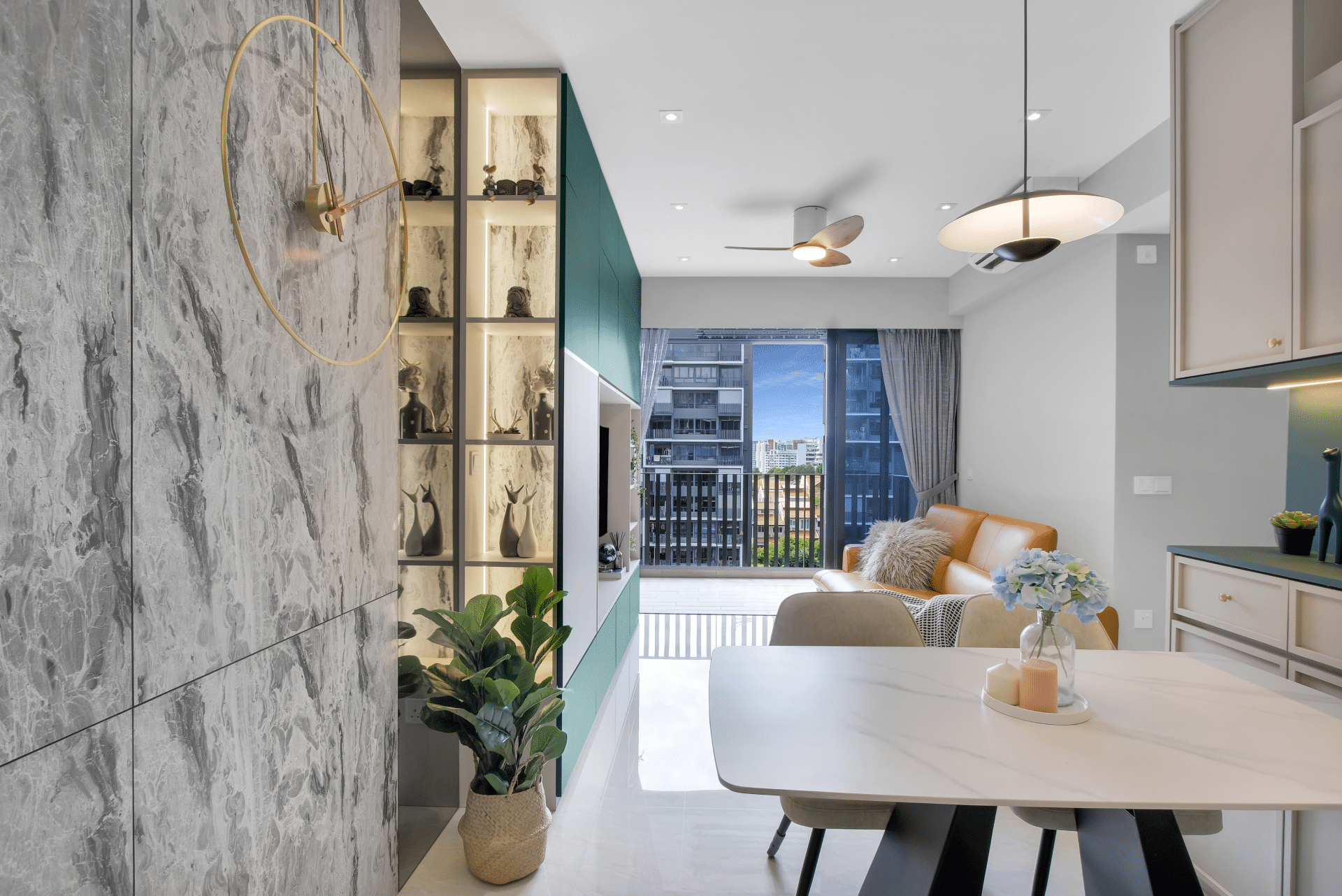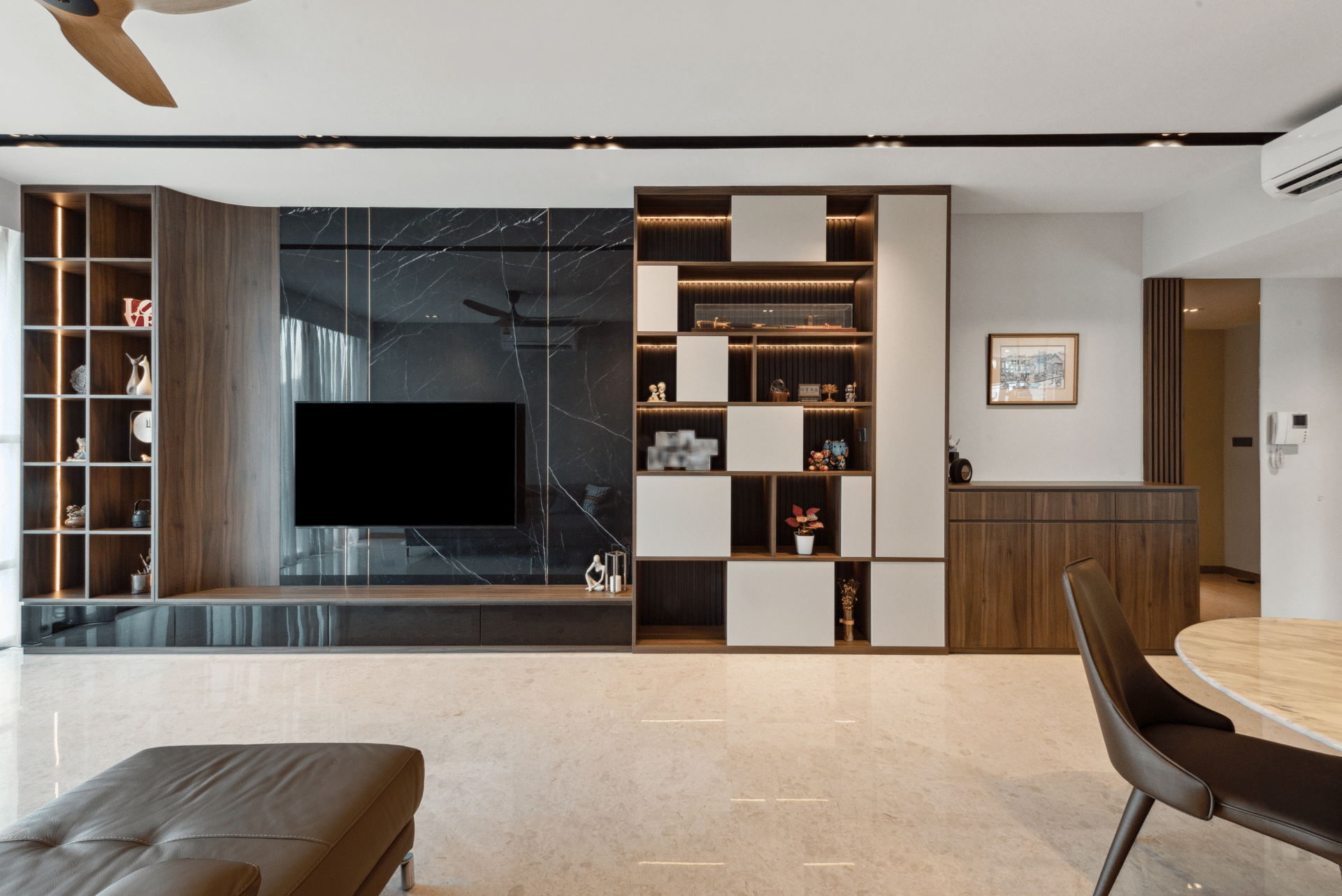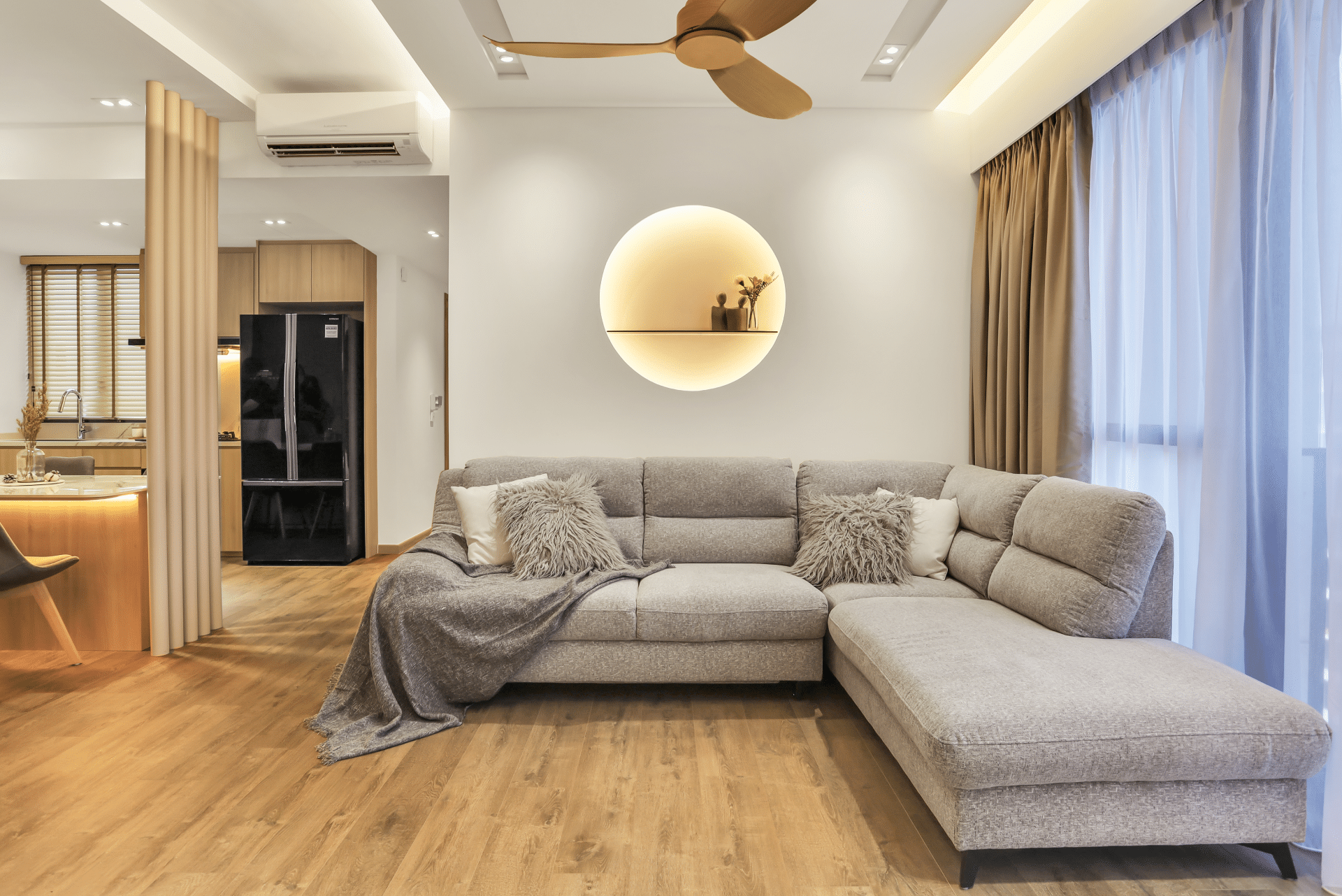Top Micro-Apartment Design Tips for Your Singapore Home
Living in a micro-apartment in Singapore poses unique design challenges. However, with careful planning and creative solutions, your small space can feel open, functional, and comfortable. Here are some tips to make the most of your micro-apartment. Here, we discuss top tips for micro apartment design. If you live in or are moving to a micro-apartment in Singapore, try utilizing these tips to create a well-organized, visually spacious home.
What Is a Micro Apartment
Micro-apartments also referred to as micro-flats or shoebox units, are typically compact private residential spaces ranging anywhere from one hundred to four hundred square feet in size. These snug units pack amenities like a kitchen, bathroom, and sleeping area into an adeptly-designed petite floorplan.
Background On Public Housing In Singapore
Singapore’s public housing model has played a pivotal role in the country’s development since independence. When Singapore attained self-governance in 1959, a mere 9% of citizens lived in public housing constructed by the government. These days, however, the numbers tell a drastically different story – a striking 80% of Singaporeans now reside in public apartments erected by the state.
The origins of this transformation can also be traced back to the formation of the Housing & Development Board) in 1960. At the time, Singapore suffered from an acute housing shortage as a result of damage during World War II, as well as rapid population growth in the post-war years. To tackle the crisis, the HDB launched an extensive and ambitious public housing program. New towns sprung up across the island over the next few decades. Today, there exist over one million HDB flats island-wide, housing over 80% of the resident population in Singapore.
Factors Driving Demand For Micro-Apartments
In recent years, a confluence of socioeconomic factors has powered demand for a new category of compact homes in land-scarce Singapore – micro-apartments. First, sustained population growth fueled by immigration has intensified competition for limited housing stock on the island. There has been a significant influx of foreigners coming to Singapore to fill labor shortages across various sectors of the economy.
This has raised rental prices and property values considerably over the past decade. Sophisticated young professionals relocating to the city-state for specialized roles have especially struggled with astronomical housing costs. Many gravitate towards more affordable micro-living spaces as attractive alternatives to lavish penthouses or landed properties. Additionally, an increasing segment of younger native Singaporeans have started moving out of their families’ publicly-developed HDB flats.
These independent millennials and Gen Z adults generally need help to afford private, non-landed homes or flashy condominiums in prime districts on their own. Compact and functional micro-apartments suit their budgetary constraints and space requirements nicely instead. The HDB itself has also constructed smaller rental studio apartments to meet this pressing need. Furthermore, tiny homes align well with shifting cultural perceptions surrounding material wealth and conspicuous consumption among younger generations today.
Current Situation In Singapore
Based on current market rates, renting a private condominium studio apartment in Singapore runs tenants around $1,600 to $2,000 per month on average. Tiny units may be more affordable, with monthly rents potentially dipping to as low as $1,000 for some HDB shoebox flats in non-central areas. Factors like location, amenities, furnishings, and market conditions can cause pricing to fluctuate substantially, though.
As of 2022, there exist over 330,000 private condominium and apartment units spread out across Singapore. Micro-apartments likely account for a small but rapidly rising proportion of this aggregate tally. Beyond privatized developments, the HDB also rents out thousands of public studio rental flats for needy resident households annually.
Concerns
While micro-apartments solve certain pressing housing issues, their scaling may give rise to other concerns around living standards and community bonds. Nonetheless, small-sized units will likely continue mushrooming across Singapore as structural realities like land scarcity and dense urbanization persist.
Policymakers face the delicate balancing act of carefully regulating micro-flat developments while also supporting affordable, sustainable housing for regular citizens. If implemented prudently, these micro-living spaces could positively supplement the nation’s extensive public housing system rather than destabilize it. The government will play a pivotal role in shaping this outcome as demand for tiny homes looks set to rise inexorably.
Micro-Apartment Design Tips for Your Singapore Home
Living in a micro-apartment in Singapore can be a rewarding experience. The limited space encourages creativity and intentionality in design. Here are some tips to make the most of your small home.
-
Choose Multifunctional Furniture
Furniture that serves multiple purposes is essential in a micro-apartment. Look for pieces like storage ottomans, fold-out dining tables, and Murphy beds. These allow a single piece to fulfill different needs throughout the day. A sofa that turns into a bed is a fantastic option. Use it as a couch for lounging during the day and fold it out at night for sleeping. Coffee tables with hidden storage compartments maximize space efficiency. Select furniture that can be folded up, stowed away, or transformed as needed. This flexibility is key for micro-living.
-
Use Vertical Space
In a small apartment, you need to utilize all dimensions – including vertical space. Installing wall-mounted shelves and cabinets provides storage while keeping the floor open. You can also mount a desk or dining table on the wall that folds down when needed. Consider also a loft bed or bunk bed to allow space underneath for a couch, desk, or other furniture.
Ladders or stairs leading to the bed will maximize usable floor area. Floating shelves are great for displaying decor and storing items. A vertical bookcase can hold a surprising number of volumes without taking up precious floor space.
-
Let In Natural Light
Sunlight makes small spaces feel more open and airy. Position furniture to allow light from windows to permeate the entire apartment. If your micro-apartment lacks sufficient windows, invest in a sunlight lamp. This mimics natural light to boost mood and make the space more inviting. You can also use mirrors to reflect and distribute natural light creatively. Hang a large mirror across from a window to “double” the light in your apartment.
-
Use Multipurpose Rooms
Micro-apartments require rooms to serve multiple functions. Create zones within a single room for different needs. For example, have an area for working, relaxing, dining, and sleeping, all within your main living space. Use area rugs and curtains to define each zone. Make sure furniture can transition between zones. With some creativity, a one-room apartment can contain everything you need.
-
Add Pops Of Color
In a small space, color can have a big impact. Vibrant accent walls or brightly colored furniture breathe life into micro-apartments. Painting one wall an energetic hue like crimson red or lime green makes the space more exciting. Keep other walls neutral to prevent overwhelm. Add pops of color with wall art, pillows, blankets, and other decorative touches. Aiming for high visual interest while retaining simplicity is one of the best micro apartment design ideas.
-
Install Creative Storage
Storage is critical for micro-apartments. It would help if you had places to tuck away everyday items and conceal clutter. Built-in storage along walls maximizes space usage. Construct customized shelving, cabinetry, and drawers during your apartment renovation. Freestanding storage pieces like ottomans, chests, and under-bed drawers also provide hidden storage.
-
Choose Multifunctional Decor
When selecting decor for a small space, opt for pieces that serve multiple purposes. An ornate room divider provides privacy between zones while acting as a beautiful decorative element. Floating wall shelves that can hold both books and artwork are some of the best micro apartment designs.
A sculptural floor lamp illuminates the room while serving as an eye-catching focal point. Tables decorated with collected items become intriguing displays. In a micro-apartment, decor should be both aesthetically pleasing and highly functional. Seek beautiful items that also fulfill practical needs.
-
Include Transitional Spaces
While your micro-apartment may contain a single open room, include small transitional spaces to add privacy. Use an attractive screen or curtain to separate your sleeping area from the rest of the room.
This defines the space while still allowing light and airflow.
If your bathroom opens directly into the main living area, add a folding screen or hanging beads. This creates a sense of separation without installing a door. Even these small transitional spaces make a micro-apartment feel less exposed. The partitions distinguish zones while maintaining an open layout. -
Choose Low-Maintenance Greenery
Plants are considered an easy way to add life and freshness to a micro-apartment. Opt for hardy varieties that require little care. Succulents like aloe and jade plants thrive in small indoor spaces with minimal watering needs. Air plants are also low-maintenance and visually striking. Small pots of herbs like mint, basil, and parsley can be grown indoors with ample sunlight. They are important for the best micro apartment building design.
Please place them in a window and use them for cooking. Miniature varieties of plants like ferns, ivy, and orchids are ideal for apartments. Their small size makes them easy to situate. A few low-key plants go a long way in brightening a micro-apartment. Let greenery flourish with little required effort.
-
Install Space-Saving Sliding Doors
Swinging doors demand acres of precious space in small flats to open without banging walls or furniture. Sliding doors fitting flush to walls are much better pinch hit. Install on closets, bathrooms, and partitions to morph into walls when closed, freeing up every inch for other purposes. Seek out mirrored panels or other snazzy touches to convert boring functions into eye-catching design features. Keep slides open to connect rooms or closed for desired privacy on a whim.
-
Embrace Minimalism
Living small asks for living minimally. Only keep things used and loved regularly. Choose furniture multitasking, not one-trick décor ponies that serve a sole purpose before turning into a waste of space. Embrace sparse, breezy spaces and clear surfaces by keeping clutter at bay. Streamline wardrobes. Banish seasonal stuff elsewhere to clear closet room for year-round essentials. To maintain zen in confined zones, counterbalance new gear added by removing existing items.
-
Edit Frequently
If you acquire something new, eliminate something else. This maintains balance in your limited environment. With creativity and intentionality, a tiny Singapore apartment can feel expansive. Apply these micro-living strategies to maximize your available square footage. Prioritize multifunctional and vertical space to transform your home.
-
Hire A Company
With the right design approach, you can love living in your petite Singapore flat. Get rid of unnecessary items and live with only essentials. Make the most of your limited landscape. Get inspired and start planning your micro-apartment by getting in touch with IDID‘s top interior decoration for the best micro-apartment building designs. Their clever building plans utilize every inch. With some sweat and imagination, a tiny Singapore flat transforms into your dream home. Hire a company is one of the best micro apartment design ideas.
Final Thought
With some creativity and smart solutions, micro-apartments can be stylish, practical, and livable. Apply these tips to open up and maximize your compact Singapore flat. Take advantage of multifunctional furniture, vertical storage, mirrors, lighting, and neutral colors. With good design, small spaces can feel much bigger. We hope this blog post about micro apartment design will be helpful.



